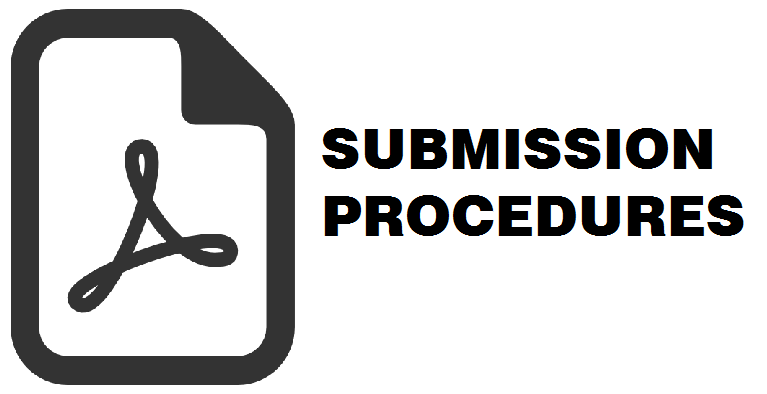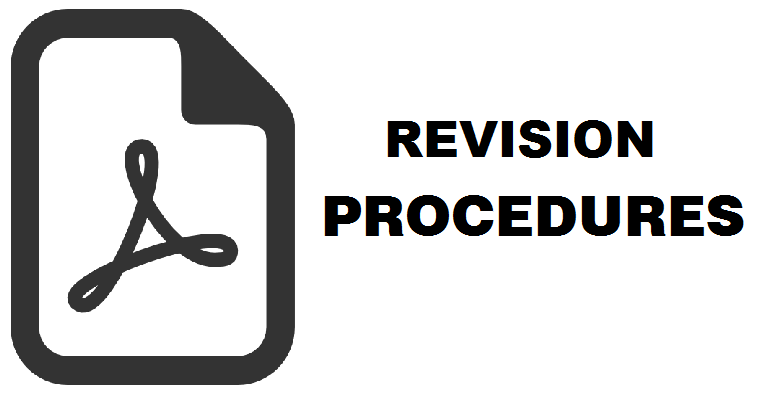An Assessment of Spatial Distribution and Utilisation of Some Medicinal Plants in Rural Communities of Osun State, Nigeria
AWOYEMI Olakunle Kolawole(1*), AWOTAYO Gbenga Paul(2), Ishaq Abdukarim A(3), AKINOLA Oluseyi John(4), Akintunde A Ogunsumi(5)
(1) Department of Geography and Environmental Management, University of Ilorin, Nigeria
(2) Department of Geography, University of Malaya, Malaysia and Department of Geography and Remote Sensing , Kwara State University, Malete , Osi Campus ,Nigeria
(3) Centre for Supply Chain Improvement, University of Derby, United Kingdom
(4) Department of Geography, Faculty of Earth and Environmental Studies. Bayero University Kano and 5Centre for Supply Chain Improvement, University of Derby, United Kingdom
(5) Department of Biological sciences, Federal polytechnic, Ede, Nigeria
(*) Corresponding Author
Abstract
The utilization of herbal products, particularly by rural communities, remains a vital component of an integrated healthcare system, addressing a myriad of prevailing illnesses and diseases. This study investigates the distribution and usage of medicinal plants in selected rural communities of Osun State, Nigeria. Employing a multi-stage sampling technique, three rural local government areas one from each senatorial district of Osun State were chosen for the study. Data were collected qualitatively through interviews with residents and herbal product merchants in the study areas. The analysis employed a content analysis framework and an interdisciplinary approach. The findings revealed the documentation of 43 plant species, categorized by their family, botanical, common, and indigenous names. Key details, including the plant parts utilized, preparation methods, dosage, and the ailments treated, were also recorded. Leaves were the most frequently used plant parts, followed by barks, roots, and fruits. The most commonly treated ailments included malaria, skin diseases, irregular menstrual flow, and typhoid fever. Additionally, plants such as ginger, turmeric, cinnamon, and black pepper were widely used as immune boosters during the COVID-19 pandemic, particularly in rural communities with limited access to vaccines. The study highlighted that limited access to conventional healthcare and the high cost of orthodox medicine have driven rural populations to rely heavily on herbal remedies, especially during the pandemic. However, factors such as deforestation, urbanization, wildfires, and inadequate documentation of medicinal plants threaten their availability and sustained usage. The study recommends the integration of herbal and orthodox medicine into a cohesive healthcare framework, particularly in light of the COVID-19 pandemic, which disproportionately affected urban populations. Emphasis on the conservation of medicinal plants and the establishment of herbal gardens, even among urban dwellers, is suggested to amplify their role in healthcare and ensure sustainable utilization.
Received: 2023-12-20 Revised: 2024-07-11 Accepted: 2025-03-07 Published: 2025-04-27
Keywords
References
Adwan,G.M Abu-shanab, M.B and Adwan, K.M (2009).In vitro activity of certain drugs in combination with plant extracts against Staphylococcus aureus infections. African Journal of Biotechnology. Vol. 8, no. 17, pp. 4239-4241,
Aiyeloja A.A and Bello O.A,(2006). Ethnobotanical potentials of common herbs in Nigeria: a case study of Enugu state. Educational Research and Review. Vol. 1, no. 1, pp. 16-22.
Ajayi, O.A and Akintola, T. A(2010). Evaluation of antibacterial activity of some medicinal plants on common enteric food borne pathogens. African Journal of Microbiology Research, vol. 4, no. 4, pp. 314-316.
Akharaiyi, F.C and Boboye B, (2010). Antibacterial and phytochemical evaluation of three medicinal plants. Journal of Natural Products, vol. 3, pp. 27-34.
Alasiri, T.A. (2017). Natural sex enhancement supplement: An inventory of sex booster. ARFH report, 2015.
Alias A. R (2014). Ethnomedicinal Survey of Botanicals Used by Herbal Practitioners in Yagba East Local Government of Kogi State. Nigeria.European Journal of Medicinal Plant; 4(12): 1479-1488.
Augustine, A.O, Arinze, F.A, Danladi, C.H, Emmanuella O.O, Ejeatuchukwu, O (2023). Herbal supplements as treatment option for Covid 19: A call for clinical development of herbal supplements for emerging and re-emerging viral threads in Sub-Sahara Africa. Journal of Herbal Medicine 1(2).
Awoyemi, O. K., Ewa, E. E., Abdul-karim, I. A., Aduloju, A. R., (2012). Ethno-botanical assessment of herbal plants in southwestern Nigeria, Academic Research Inter-national 2 (3).
Belewu, M.A. Olatunde, O.A and T. A. GiwaT.A (2009). Underutilized medicinal plants and spices: chemical composition and phyto chemical properties. Journal of Medicinal Plant Research, vol. 3, no. 12, pp. 1099-1103.
Bussmann R W and Sharon D (2006).Traditional medicinal plant use in Northern Peru: tracking two thousand years of healing culture. Journal of Ethnobiology and Ethnomedicine, vol. 2, article 47.
Bussmann, R W (2006). Manteniendo el balance de naturaleza y hombre La diversidadfloritica Andina y suimpotaniciaporladiversidad cultural-ejemplos del norte de Peru y Sur de Ecuador. Amaldoa. Vol. 13, no. 1-2, pp. 382-397.
Coontz, S. (2016). The way we never were: American families and the nostalgia trap. Hachette UK.
Dassah, E., Aldersey, H., McColl, M. A., & Davison, C. (2018). Factors affecting access to primary health care services for persons with disabilities in rural areas: a best-fit framework synthesis. Global health research and policy, 3(1), 1-13.
Elufioye T. O Oladele A. T, Cyril-olutayo CM, Agbedahunsi JM and Adesanya SA(2012). Ethnomedicinal study and screening of plants used for memory enhancement and antiaging in Sagamu, Nigeria. European Journal of Medicinal Plants. Vol:2(3): 262-275. Science Domain International
Elujoba, A.A Odeleye, M.O and Ogunyemi C.M,( 2005). Traditional medical development for medical and dental primary Health care delivery system in Africa. African Journal of Traditional. Complementary and Alternative Medicine.Vol.2,no. 1, pp. 46-61.
Grigo, J. (2022).Traditional African Medicin. as Living Cultural Heritage: Conditions and Politics of Knowledge Transfer. Senri Ethnological Studies, 109, 101-124.
Gyasi, R. M., Mensah, C. M., Osei-Wusu Adjei, P., & Agyemang, S. (2011). Public perceptions of the role of traditional medicine in the health care delivery system in Ghana.
Ijeh, I.I. Njokwu, O.I.U and Ekenze, C.Z (2004). Medicinal evaluation of extracts of Xylopia aethiopica and Ocimumgratissium. Journal of Medicinal and Aromatic Plant Sciences. vol. 26, pp. 44-47, 2004.
James, P. B., Wardle, J., Steel, A., & Adams, J. (2018). Traditional, complementary and alternative medicine use in Sub-Saharan Africa: a systematic review. BMJ global health, 3(5), e000895.
Jamshidi-Kia, F., Lorigooini, Z., &Amini-Khoei, H. (2017). Medicinal plants: Past history and future perspective. Journal of herbmed pharmacology, 7(1), 1-7.
Kakooza-Mwesige, A. (2015). The importance of botanical treatments in traditional societies and challenges in developing countries. Epilepsy & Behavior, 52, 297-307.
Kayne, S. B. (2009). Introduction to traditional medicine. Complementary and Alternative Medicine, 2nd Edition, Pharmaceutical Press, London, 1-24.
Kenta Diaz (2022). Herbal plants as Immunity Modulator against Covid 19: A primary preventive measure during home quarantine. Journal of Herbal Medicine 1(2)
Mohana, D. C Satish, S and . RaveeshaK.A,(2008). Antibacterial evaluation of some plant extracts against some human pathogenic bacteria. Advances in Biological Research, vol. 2, no. 3-4, pp. 49-55.
Mothibe, M. E., & Sibanda, M. (2019). African traditional medicine: South African perspective. Traditional and Complementary Medicine, 2019, 1-27.
Nwauzoma A,B. Magdalene .S and Dappa C.( 2013). Ethno botanical studies of PortHacourt Metroplis Nigeria. Hindawi Publishing Corporation.
O'connor, J. (2017). The fiscal crisis of the state. Routledge.
Ogunmefun OT, Olatunji B P and Adarabioyo M I. (2015).Ethno medicinal Survey on the Uses of Mistletoe in South-Western Nigeria. European Journal of Medicinal Plants,; 8(4): 224-230, 2015.
Okigbo,R.N and E. C. Mmeka, E. C( 2006). An appraisal of phytomedicine in Africa, KMITL Science and Technology Journal, vol. 6, no. 2, pp. 83-94, .
Panossian, A. G., Efferth, T., Shikov, A. N., Pozharitskaya, O. N., Kuchta, K., Mukherjee, P. K., ... & Wagner, H. (2021). Evolution of the adaptogenic concept from traditional use to medical systems: Pharmacology of stress‐and aging‐related diseases. Medicinal research reviews, 41(1), 630-703.
Qadir, S. U., & Raja, V. (2021). Herbal medicine: Old practice and modern perspectives. In Phytomedicine (pp. 149-180). Academic Press.
Sen, S., & Chakraborty, R. (2017). Revival, modernization and integration of Indian traditional herbal medicine in clinical practice: Importance, challenges and future. Journal of traditional and complementary medicine, 7(2), 234-244.
Tsobou, R., Mapongmetsem, P. M., & Van Damme, P. (2016). Medicinal plants used for treating reproductive health care problems in Cameroon, Central Africa. Economic botany, 70, 145-159.
Yuan, H., Ma, Q., Ye, L., & Piao, G. (2016). The traditional medicine and modern medicine from natural products. Molecules, 21(5) 559.
Article Metrics
Refbacks
- There are currently no refbacks.
Copyright (c) 2025 Authors and Indonesian Journal of Geography

This work is licensed under a Creative Commons Attribution-NonCommercial 4.0 International License.
Accredited Journal, Based on Decree of the Minister of Research, Technology and Higher Education, Republic of Indonesia Number 225/E/KPT/2022, Vol 54 No 1 the Year 2022 - Vol 58 No 2 the Year 2026 (accreditation certificate download)
ISSN 2354-9114 (online), ISSN 0024-9521 (print)









